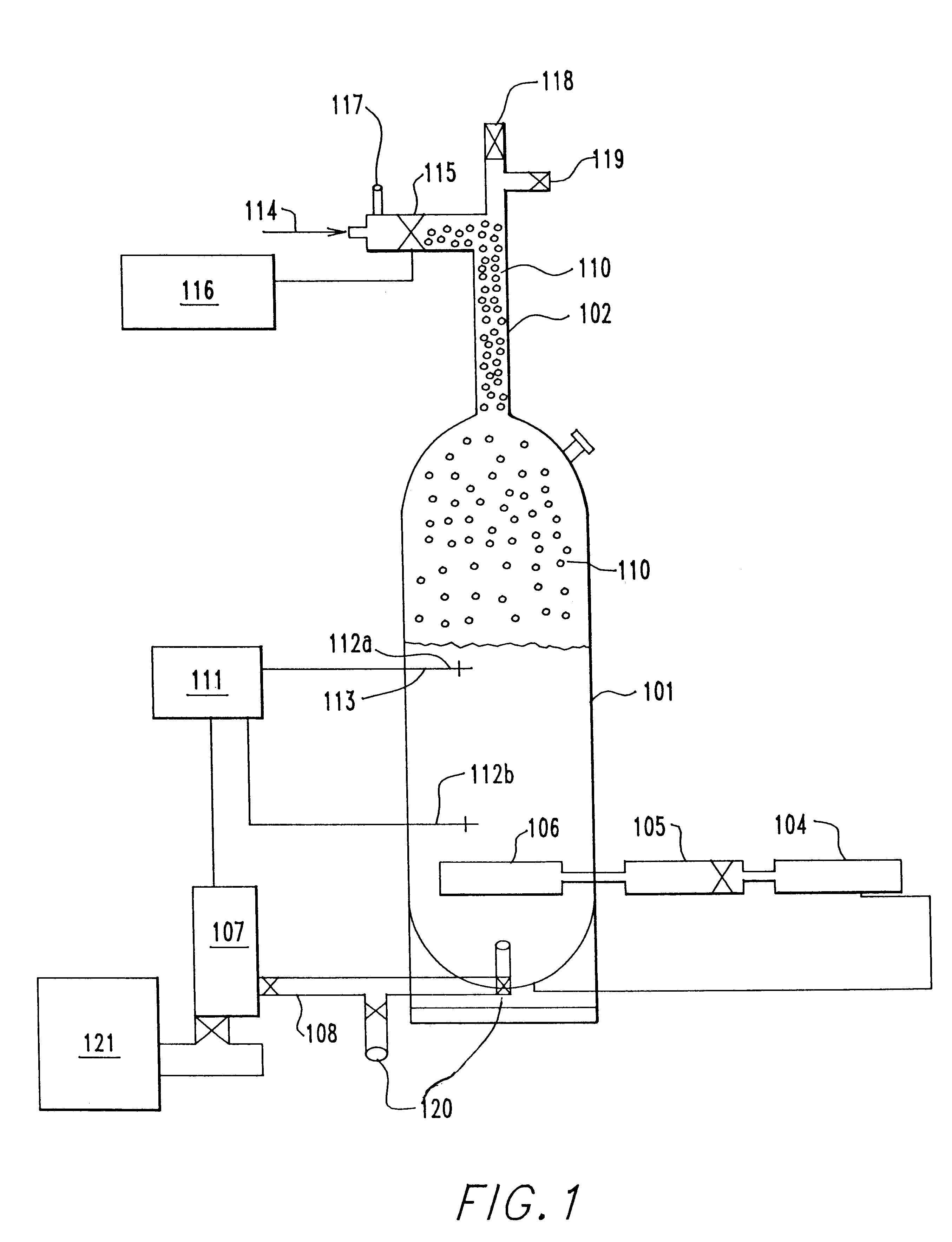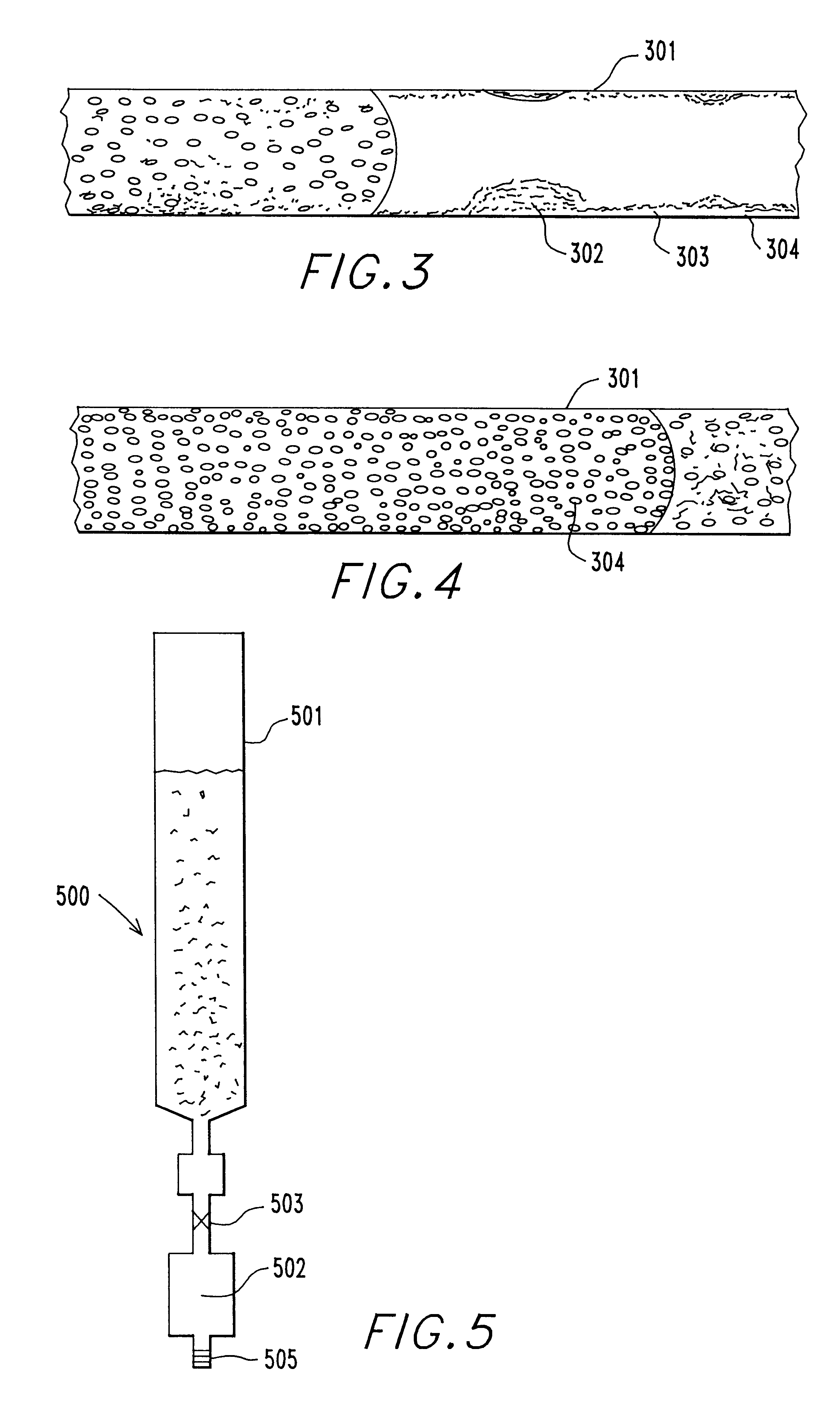Method and apparatus to clean and apply foamed corrosion inhibitor to ferrous surfaces
- Summary
- Abstract
- Description
- Claims
- Application Information
AI Technical Summary
Benefits of technology
Problems solved by technology
Method used
Image
Examples
example 1
T&A Produce, Inc. of California has a fire sprinkler system in their bag storage plant in Salinas, Calif. A site inspection has revealed that heavy tuberculation, from MIC activity, exists within the system. The heavy tuberculation must be removed in order for the passivation of the internal wall of the fire sprinkler piping to be effective. Laboratory testing is done on a sample of the piping and it is determined that the following formulation will be effective at cleaning & passifying this particular fire protection system:
The most preferred formulation for FPS and pipelines listed above with the addition of the following additives:
1.0% (by weight) Sodium Dodecylbenzenesulfonate (K) (Surfactant used to disperse other additives within the formulation).
10.0% (by weight) Sulfamic Acid (E) (Additive used to dissolve tubercles from the inside piping walls).
Formulation should not be neutralized to pH of 6.7 to 7.5. The pH of solution needs to be below 1.0.
example 2
Duke Energy Field Services of Colorado has a natural gas pipeline, which is 6 miles in length, 6" diameter in Platteville, Colo. Gas analysis shows there is a level of hydrogen sulfide gas of 324 ppm. Analysis also detects a population of MIC causing bacteria (SRB) sulfate reducing bacteria) at levels above (>) 1,000,000 colonies / cc. The velocity of the pipeline's gas exceeds a constant of 100 SCF / minute 24 hours a day. Laboratory testing is done on a section of the pipeline with gas samples (from the actual pipeline) re-circulated at 10 scf / minute STP for a period of 7 days, using various formulations. It is determined that the following formulation will be effective in forming a tenacious bio-static coating, under these specific conditions:
The most preferred formulation for FPS and pipelines listed above with the addition of the following additives:
3.5% (by weight) Sodium Borate (O) (Additive to make layer of passivity more tenacious in high velocity, often used systems).
5.0% (by...
example 3
Dole of California has a plant in Tempte, Ariz. where vegetable processing and packaging is performed. Water from a cooling tower is used to cool the water received from heat exchangers, within the plant. Analysis of the water from the cooling tower indicates a high level of MIC causing bacteria: APB (acid producing bacteria) and SLYM (slime producing bacteria). In addition, high levels of calcium (311 ppm) and magnesium (123 ppm) have been detected by chemical analysis. Laboratory testing of various formulations determines that the following formulation will be effective in assuring scale deposition will not occur and a tenacious bio-static coating will be applied:
The most preferred formulation for FPS and pipelines listed above with the addition of the following additives:
5.0% (by weight) Polyvinylpyrrolidone (V) (Additive to increase bio-static coating properties).
1.0% (by weight) Sodium Alkane Sulfonate (N)(Surfactant used to disperse other additives within the formulation)
7.4% ...
PUM
 Login to View More
Login to View More Abstract
Description
Claims
Application Information
 Login to View More
Login to View More - R&D
- Intellectual Property
- Life Sciences
- Materials
- Tech Scout
- Unparalleled Data Quality
- Higher Quality Content
- 60% Fewer Hallucinations
Browse by: Latest US Patents, China's latest patents, Technical Efficacy Thesaurus, Application Domain, Technology Topic, Popular Technical Reports.
© 2025 PatSnap. All rights reserved.Legal|Privacy policy|Modern Slavery Act Transparency Statement|Sitemap|About US| Contact US: help@patsnap.com



